40th honvéd infantry division
This division included the 6th, 19th, 29th and 30th honvéd infantry regiments, which received crews from the central areas of the Kingdom of Hungary, mainly from the Danube-Tisza area. They fought on the Russian front for most of the war. They took part in stopping the Russian invasion of Galicia in the winter of 1914-15 and then in the great offensive of the spring and summer of 1915. At the end of the year, they defended their positions in Bukovina against the troops of General Ivanov in the area of the municipalities of Toporoutz and Rarancze, north of Czernowicz, the capital of Bukovina, at a huge loss. In the fall of 1916, they were commanded to repel the Romanian invasion in Transylvania, and for more than a year at that time they fought in the foothills of the Carpathians around Dorna Vatra and Kirlibaba.
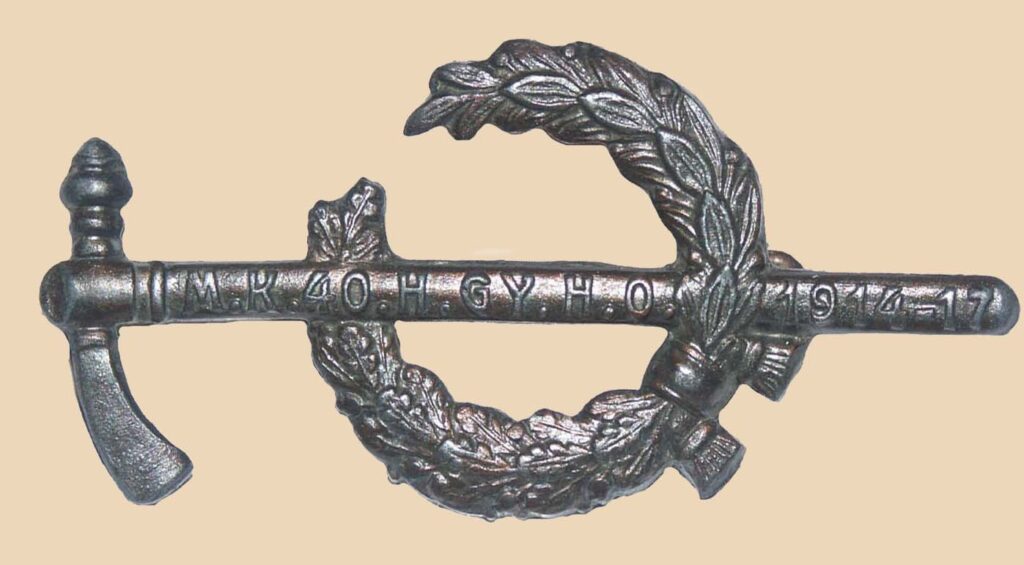
The badge of the division depicts the ancient weapon of the Hungarian infantry, the fokos. The division was also called the “Fokos Division,” and the title of their newspaper on the front was also “Fokos”. The fokos did appear in the armament of the soldiers. A variety of new and old means of trench warfare were used. One of these was the long-handled, relatively light and small-headed axe, the fokos. Photographs prove, and memoires also mention, that in late 1915 it was already used en masse in the defensive battles of Bukovina. A picture also shows the division’s fokos-producing “military plant” in Czernowicz. I believe that the successful defense of 1915-16 laid the foundation for the reputation and popularity of the combat device.
The fokos became widespread in the Hungarian-speaking regiments. It can be seen in a lot of pictures, but rather used as a kind of walking stick or as a souvenir. Often rows of memorials were engraved in his head, gifted to each other by soldiers. However, this secondary proliferation does not overshadow that it was regularized as a regular weapon in the 40th Infantry Division and used in combat.
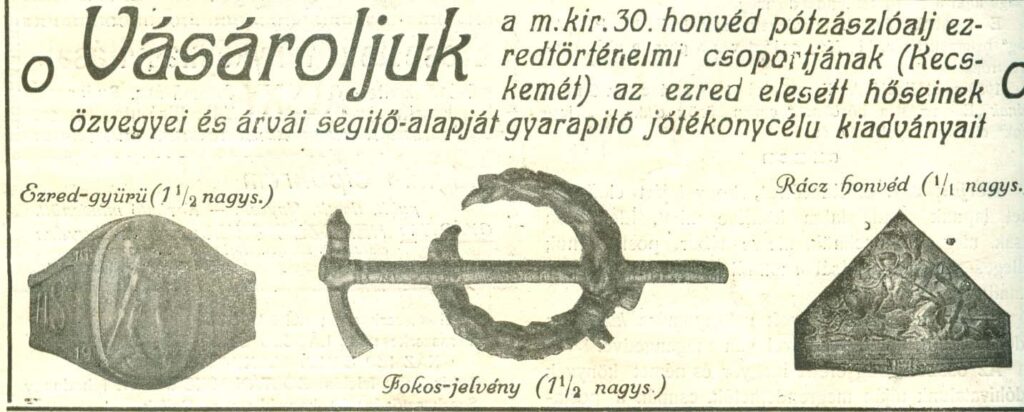
The fokos surrounded by laurels became the symbol badge of the 40th Infantry Division. Copies of the badge were made with three different years engraved, 1916, 1917 and 1918. Several material versions are also known. So then maybe this badge was made in the biggest variety of versions. One of the sergeants shown in the wearing photo uses the badge pinned between the buttons on the front of his cap. This wear seems to be the most common. Among the advertisements in the field newspaper of the 30th Regiment, among others, the publisher encourages the purchase of this badge.

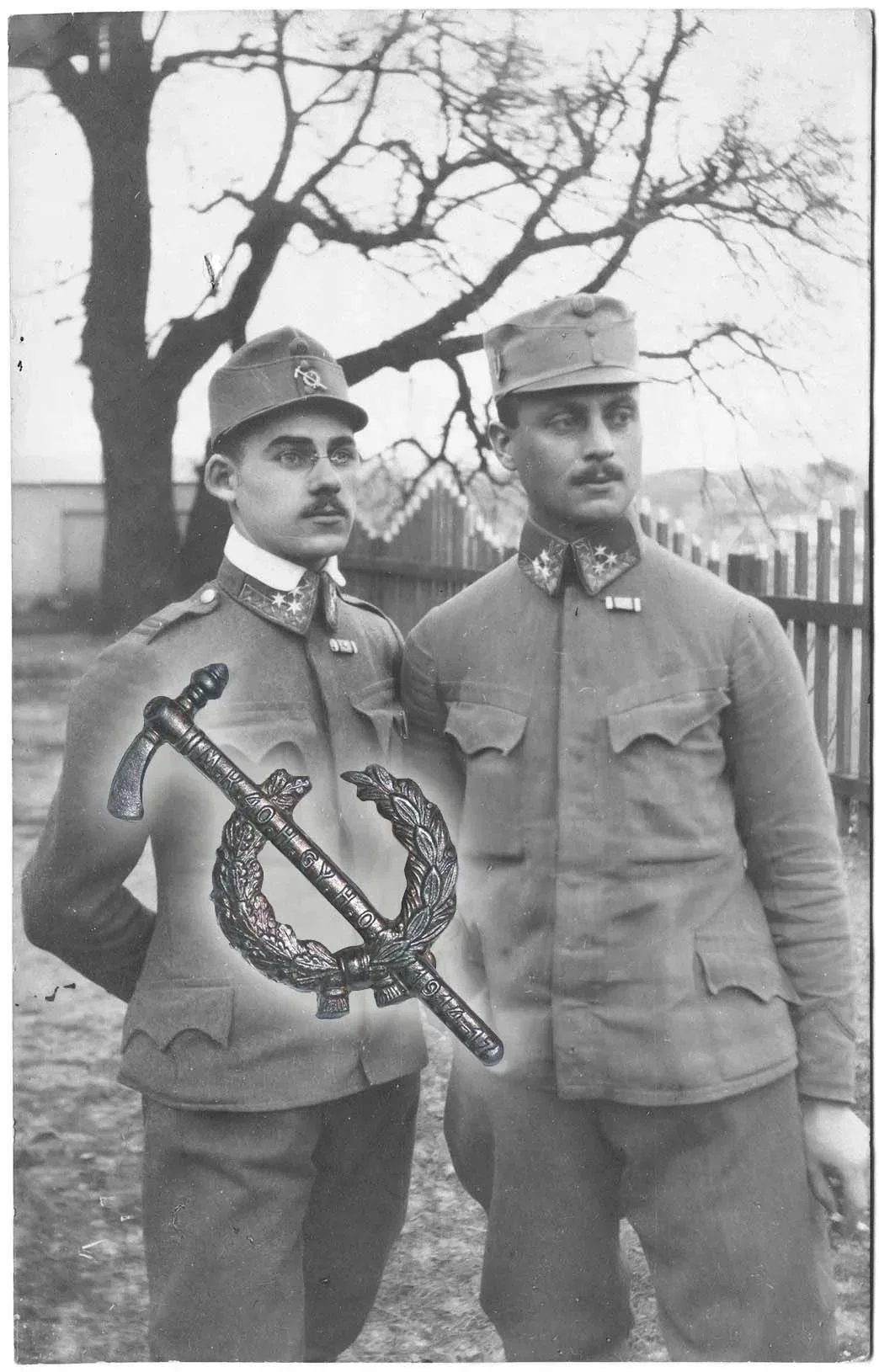
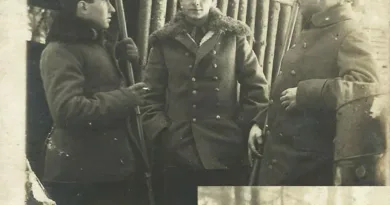
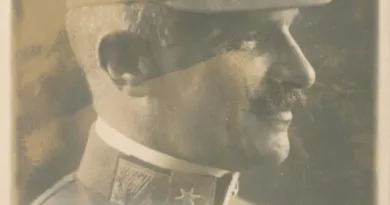
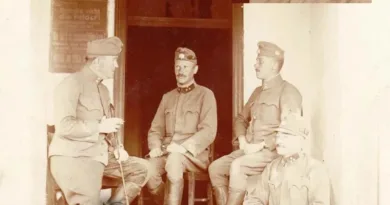
[…] Axe) Infantry Division. The reader could get a taste of the division’s struggles here and here. The fokos was systematized and applied in melee in all regiments of the division. His depiction […]